With our orphan in our possession, I needed to proceed carefully to avoid the minor financial ruin that is always a possibility with a car that’s been sitting for a while. Granted, the amount that I had in it at this point could have easily been recouped with a couple of the parts and scrapping the rest, but I didn’t want to add to my burden a shelf full of brand new parts that wouldn’t be used. To that end, I set about working in small stages, keeping the injections of cash as small as possible to achieve the next goal.
Before worrying about replacing the top or the tires or even buying a used battery for it, I wanted to get the fuel pump working and verify that it would start, drive, and stop. Yes, the claim was that the engine ran and sounded fine with starting fluid, but I wanted to be sure there wasn’t anything that was going to make this cost more than it would be worth. Step one was to get it off the trailer and into the shop.
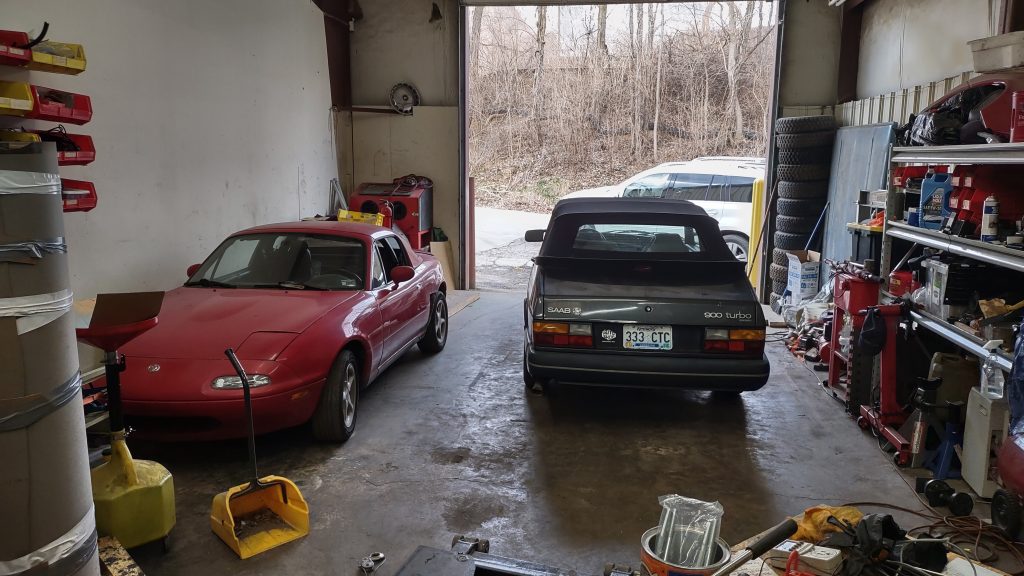
Fortunately, this is one of those vehicles where access to the fuel pump is through removable body panels and the tank doesn’t need to be taken down.
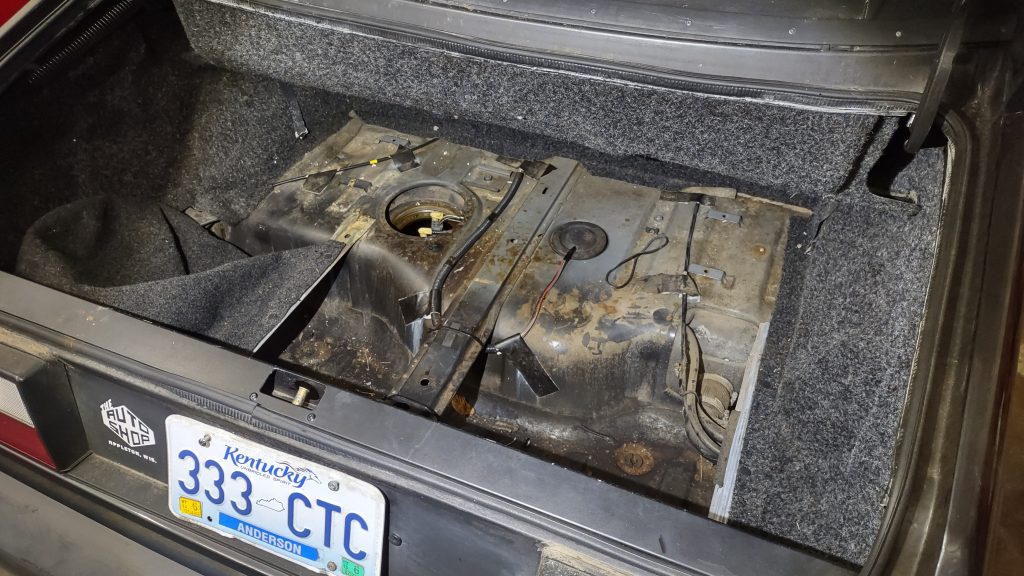
The fuel pump canister had already been removed from the tank and the pump itself removed from the canister. The good news was that we had a head start. The bad news, though, was that not all the various bits made it back into the trunk.
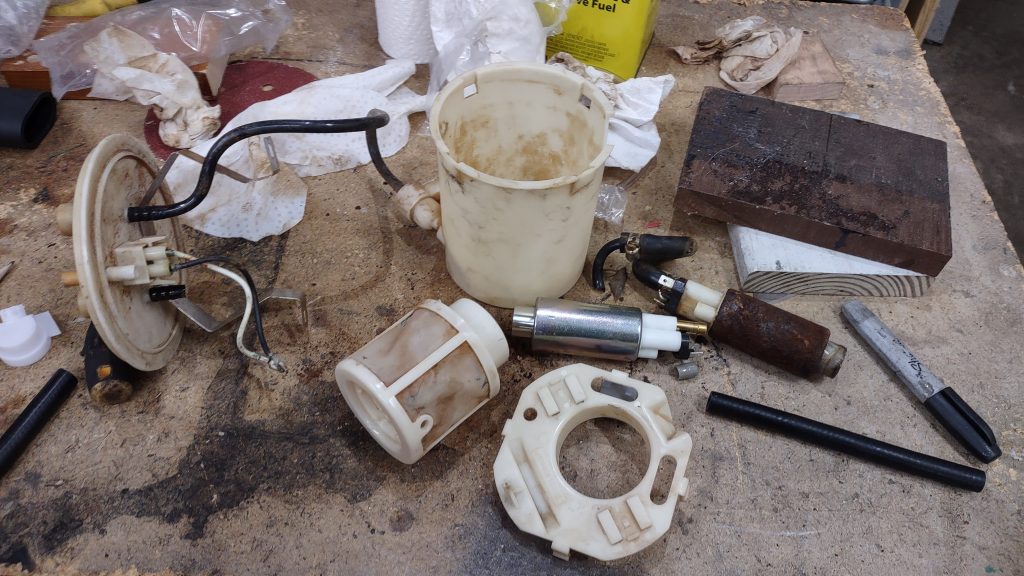
Not seen in that picture is the clip that holds the fuel lines to the top of the canister or the rubber isolators that hold the pump inside the strainer. I didn’t realize at this time that I was missing that clip, but when I mentioned on the GRM forums that I was missing the isolator, Powar immediately ran to his parts stash, took another canister apart, pulled out the bits I was missing, and mailed them to me. All on his own dime and out of the goodness of his heart.
Once we had those parts, the canister went back together, got installed in the car, and…. nothing.
The fuel pump wouldn’t run when we cranked the engine and it wouldn’t run when we bypassed the fuel pump relay. There was power at the canister connector, but the pump itself wasn’t running. The frustrating part of that was that I always test things like fuel pumps before installing them because the amount of work involved in getting them in and out of their installed location is so great. In this case, my jumpbox wasn’t handy to make a direct connection to the pump, so I was lazy and just slapped it in there.
Out came the canister, out came the pump, and before I started the return process I decided to go ahead and give it 12 volts just to see what it would do. Amazingly, it started humming away with no hesitation. Through some more detective work, I determined that the problem was in the canister itself.
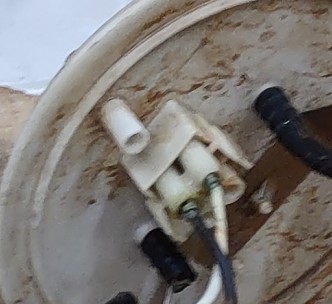
The lid of the canister has a connector that is simply two male ends, one on the outside of the canister and one on the inside. The car’s wiring harness connects to the outside one and then the fuel pump itself connects to the inside. It isn’t a complicated design at all, just four long pins held in place with plastic, but it was the source of the lack of fuel delivery. We hit the pins with some sandpaper to scrape away the corrosion that had built up and suddenly the pump was working. Total cost for the repair to the canister was zero dollars and zero cents – all we needed was a new pump and a little bit of fuel line because I managed to break one of the brittle plastic tubes in the process.
With the pump re-re-installed, we clamped the ignition wires together, tapped the starter wire to a 12V source and before the car would start, fuel went flying everywhere!
What we didn’t know was that there was supposed to be a clip to hold the fuel lines down. We didn’t have that clip and didn’t know it existed, so ours was just unsecured like this.
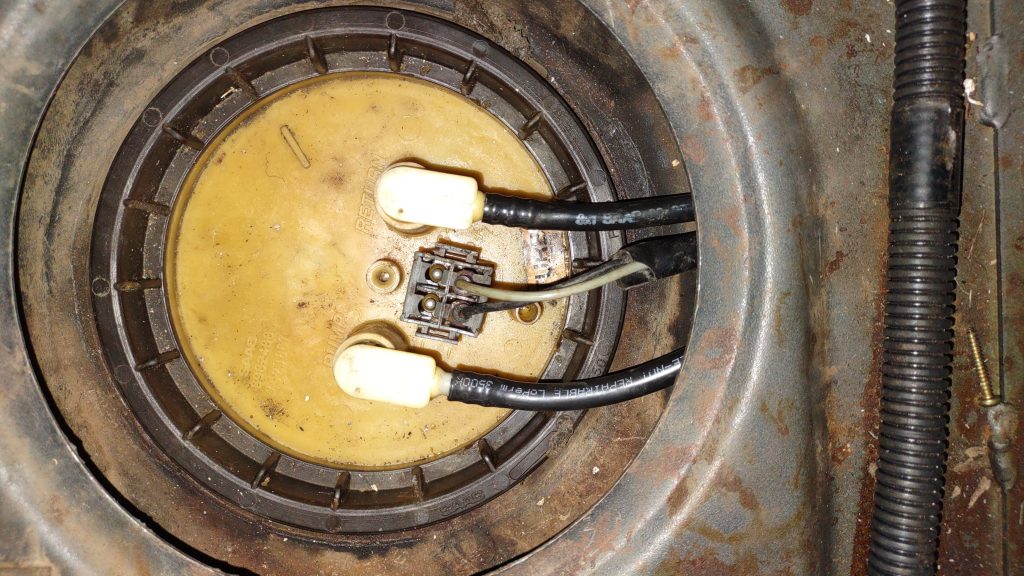
That little clip didn’t seem to exist anywhere as an easy-to-find part, so a little bit of scrap steel got us a new bracket that was effective in holding the fuel lines in place.
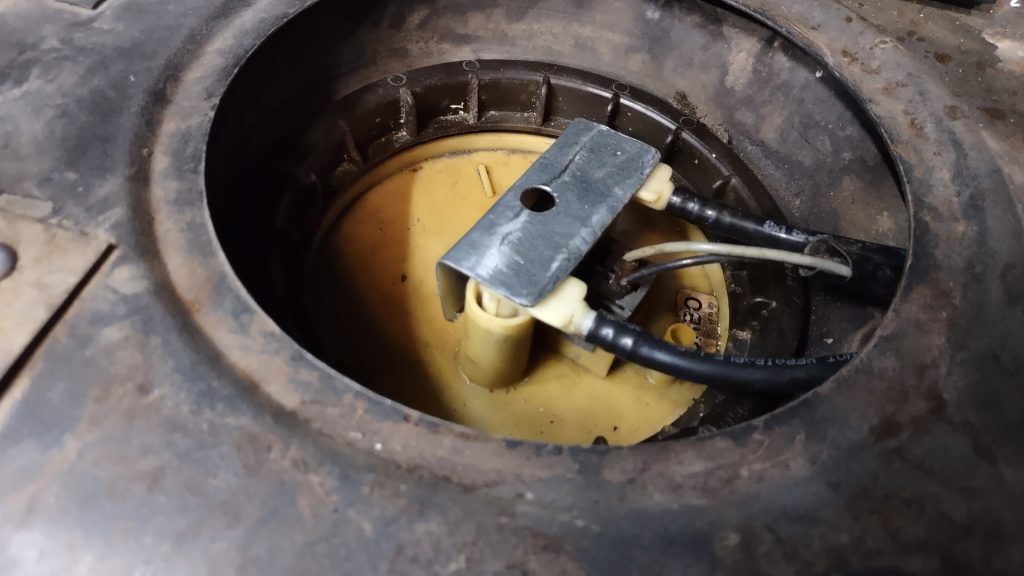
With the clamp in place, we were able to get the car to start up and after 9 years it moved under its own power!